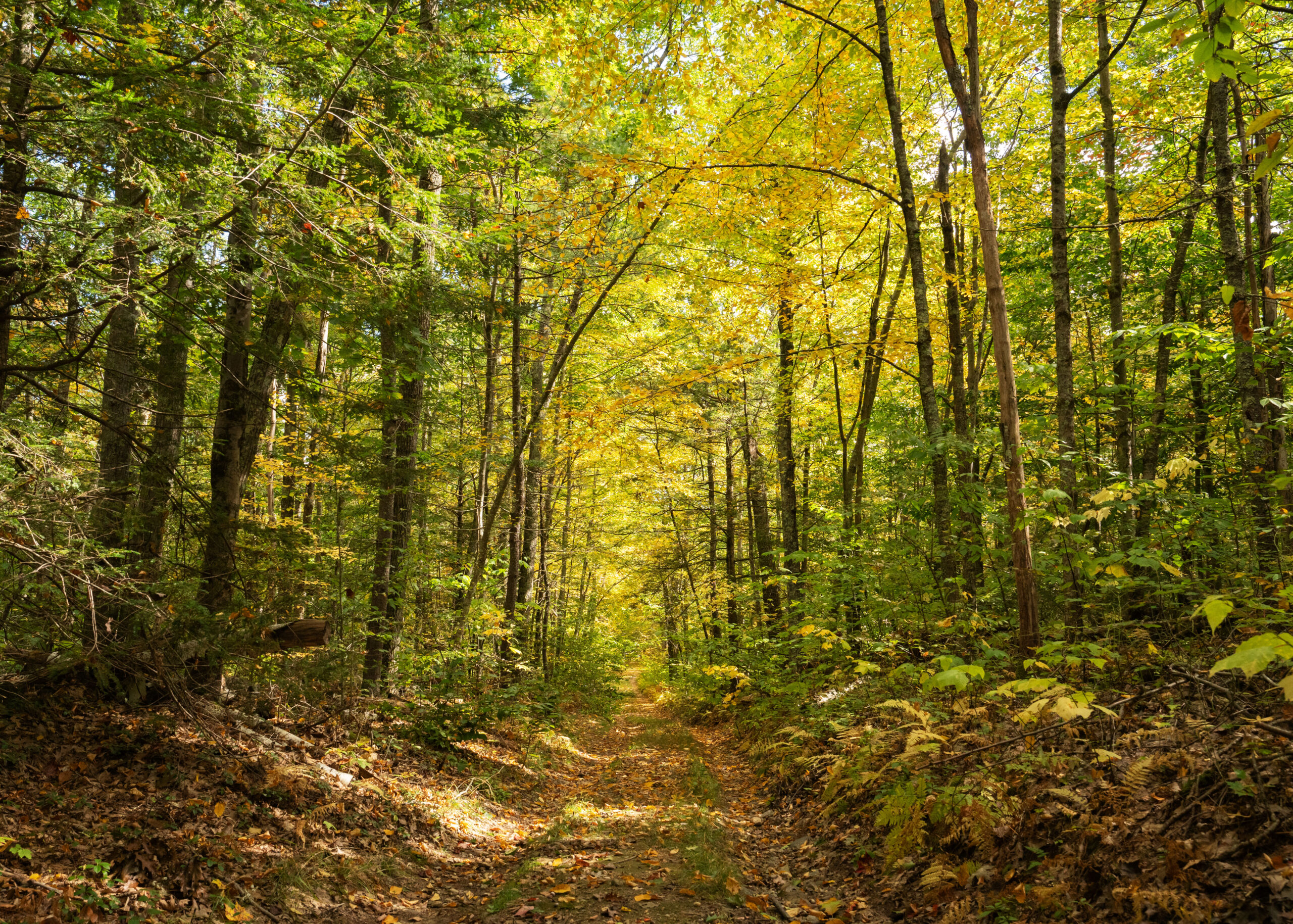Trails & Recreation
Harvard Forest contains 3,850 acres and has over 32 miles of public trails. The trails can be used year-round, whether or not the Fisher Museum or offices are open. Maps for self-guided tours are available online or at the Fisher Museum.

Maps
Maps are available in hard copy at the Fisher Museum, or can be downloaded here:
- Gate map of all Harvard Forest roads and trails (last updated Nov. 2021)
Parking
Parking is available in front of the Fisher Museum (324 North Main Street, Petersham) for the Prospect Hill tract and just off Route 122 at the east and west edges of Harvard Pond for the Tom Swamp tract.
Natural History and Ecology Trails
- A self-guided reflective trail (new in 2024) centering local Indigenous land-kinship concepts begins at the Fisher Museum and covers 0.5 miles.
- Printable brochure for the Manchage Manexit trail coming soon!
- A self-guided ecology and colonial history trail begins at the Fisher Museum and covers 2.5 miles.
- Printable brochure for the French Road Trail.
- A self-guided nature and colonial history trail begins at the Fisher Museum and covers 0.5 miles (marked with red blazes).
- Printable map of the Sanderson Farm Natural History Trail.
- Please note that the 1.5-mile, yellow-blazed Black Gum Trail has been closed to the public due to the hazard presented by dying hemlock trees (learn more about the hemlock woolly adelgid).
Guided tours are available on a limited, staff-available basis.
A field guide to the plants of the Harvard Forest is available, as is a more recent update to include the plants of the Harvard Farm.
Hunting
Except for a few intensive research areas, hunting is allowed at Harvard Forest in the seasons and according to the regulations of the Massachusetts Division of Fisheries and Wildlife. Trail visitors and their pets should wear blaze orange from Oct. 16 to Dec. 30 (though no hunting is allowed on Sundays).
The few intensive research areas where hunting is restricted are clearly posted. There is also no hunting allowed in the vicinity of Harvard Pond, which is a wildlife preserve, or at the Matthews Plantation in Hamilton, Mass.
Do’s and Don’ts
Hiking, cross-country skiing, and snow-shoeing are allowed on all roads/trails. Mountain biking and horseback riding uses are limited; signs on trails designate where biking and horseback riding are permitted. Permissions are also reflected on our trail maps.
Motorized recreation is prohibited.
Camping and fires are prohibited.
Dogs are allowed on Harvard Forest trails, but must be leashed or under strict voice command at all times.
Visitors are requested to stay on the trails and must not disturb any research equipment, materials, or markers.
An Important Note about the Witness Tree
Some of you may have heard of Harvard Forest because of the Witness Tree (learn more about that project here). We ask that you do not seek to find and visit the Witness Tree for two reasons: 1) it is purposefully located off the beaten track, in a research area that is filled with wires and delicate equipment that can be easily tripped over and dislodged, disrupting the important work underway, and 2) foot traffic is hard on forests. Trampling the plants in the pathway near and around the tree can disrupt our research. We ask that if you visit the Harvard Forest, you stick to designated trails, and marvel at the incredible, 100+ year-old oak trees that surround you there.